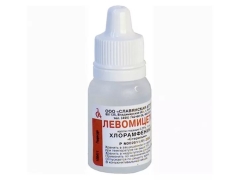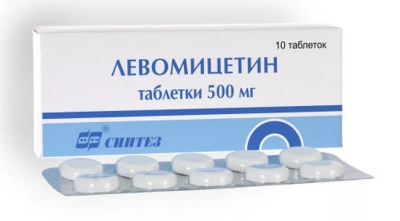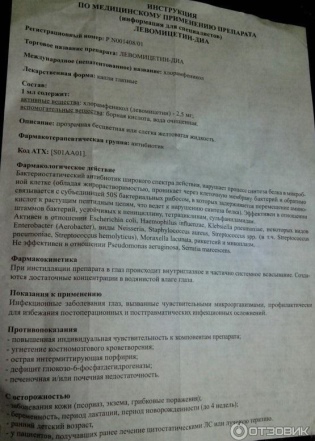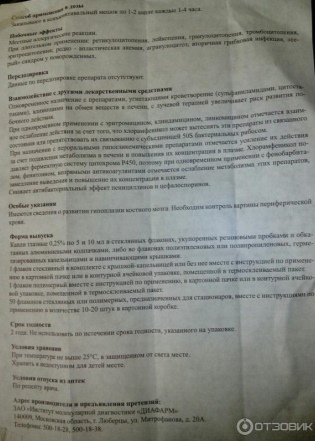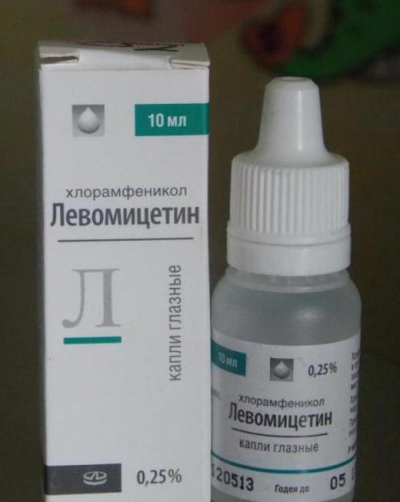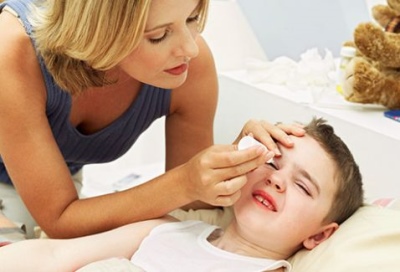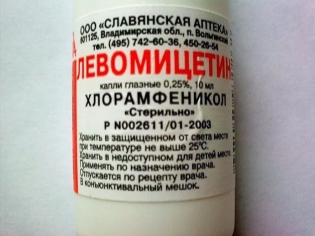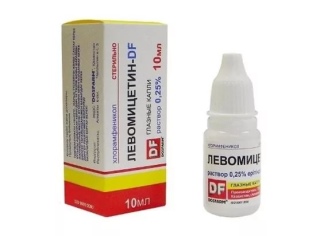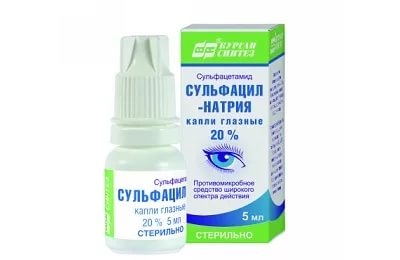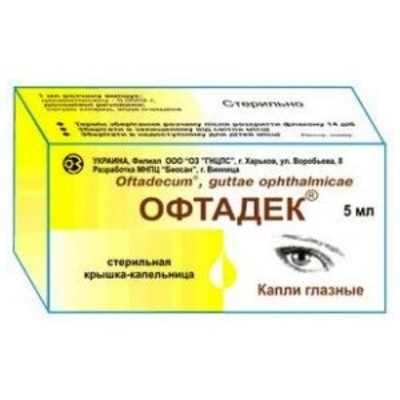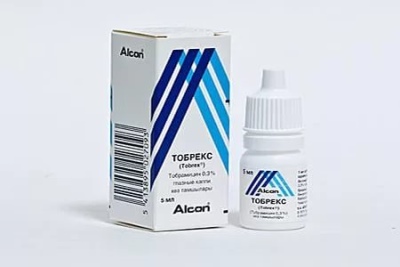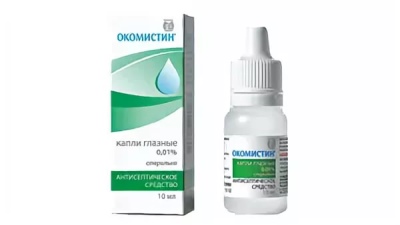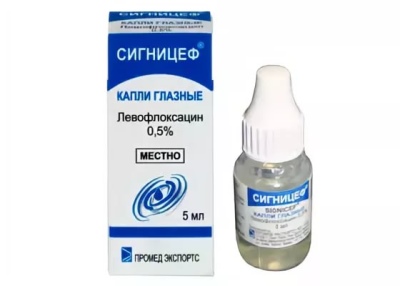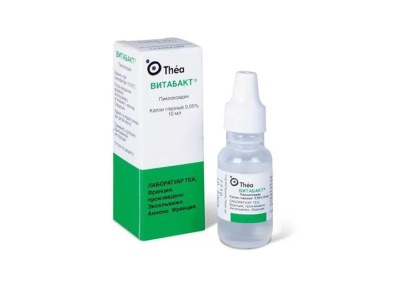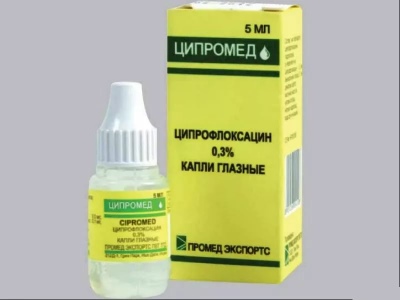Eye drops "Levomitsetin" for children
Levomitsetin is well known to adults as an inexpensive and effective remedy for intestinal infections and poisoning, which helps to quickly eliminate vomiting and diarrhea. One form of this antibiotic is 0.25% eye drops. When are they prescribed, are they allowed in childhood and which drugs can be replaced?
Release form
Levomycetin in the form of drops for the eyes is a clear liquid without any shade, packed in a plastic bottle dropper or in a glass bottle on which the dropper cap is put on. One bottle contains 5 or 10 ml of medication.
In addition to eye drops. Levomycetin is still produced in these forms:
- pills;
- capsules;
- coated tablets;
- alcohol solution for outdoor use.
Ointment, ampoules for injections, gel, suspension and other forms of such a drug are absent.
Composition
The active component of the drug is chloramphenicol, which contains 2.5 mg per 1 ml of drops. In addition to it, there is still purified water in the solution and boric acid. Other ingredients in this medication are missing.
Operating principle
Levomycetin is a bacteriostatic antibiotic that can interfere with the synthesis of protein molecules in microbial cells. Since its active ingredient is fat soluble, it easily passes through the cell membranes of bacteria and then binds to their ribosomes. This provokes a delay in the movement of amino acids, with the result that peptide chains do not grow and no proteins are formed.
The spectrum of antimicrobial effects of drops is quite wide. The drug is active in relation to hemophilus bacillus, Klebsiella, gonococcus, streptococcus, Escherichia coli, Staphylococcus aureus, moraxcella, pneumococcus and some other microorganisms. It acts on many strains that are insensitive to sulfa drugs, tetracyclines and penicillins.
Like other antibiotics, chloramphenicol is ineffective against viral eye lesions, and in pills such medicine does not work with rotovirus.
Indications
Drops Levomycetinum is used to damage the eyes by bacteria that are sensitive to chloramphenicol.
The drug is prescribed to children:
- with conjunctivitis;
- with blepharitis;
- with dacryocystitis;
- with blepharoconjunctivitis;
- with keratitis;
- with keratoconjunctivitis;
- with barley;
- with neuroparalytic keratitis, complicated by bacterial infection.
At what age do children use?
There are no age restrictions for Levomycetinum eye drops. However, the instructions for the drug noted that its use in newborn babies should be with extreme caution. Children at an early age to drip such an antibiotic without expert control is unacceptable. And for a child who is 3 years old or more, the use of chloramphenicol without prior examination by a pediatrician or an ophthalmologist is undesirable.
Contraindications
The drug is prohibited to drip when:
- Hypersensitivity to chloramphenicol or boric acid.
- Hepatic insufficiency.
- Lack of glucose-6-phosphate dehydrogenase.
- Acute intermittent porphyria.
- Renal failure.
- Oppression of blood formation in the bone marrow.
If a small patient has any skin disease (for example, a fungal infection, eczema, or psoriasis), Levomycetin is dripped with caution.
Side effects
Some babies have a local allergic reaction after using the drops. It can be severe tearing, itchy eyes, redness, burning sensation, skin rashes and other symptoms. When they appear, the treatment with drops should immediately be stopped.
If Levomycetinum therapy is too long, it can affect blood formation and provoke thrombocytopenia, leukopenia and erythrocytopenia up to the development of aplastic anemia.
Under the influence of the drug may decrease the number of granulocytes to complete agranulocytosis. Sometimes a fungal infection (secondary) also develops.
Instructions for use
- Having laid the child or having seated the baby and tilting his head back, gently pull the lower eyelid down and, having turned the bottle over, place it over the eye. Then the medicine is dripped into each eye one drop at a time, pressing on the nozzle-drip, but not allowing the tip of such a nozzle to touch the body. In some cases, a single dose of chloramphenicol will be not one, but two drops.
- Even if only one eye has an infectious lesion in a small patient, both eyes should always be dripping. This will prevent the spread of bacteria.
- The frequency of the introduction of the solution into the conjunctival sac must be determined by the doctor. Between instillations can be from one to four hours.
- The duration of the treatment with drops is also determined individually. If the medication is prescribed for a long course, you should regularly do a blood test to prevent bone marrow damage.
Overdose
The manufacturer does not provide any information about the negative effect of drops when their dosage is exceeded.
Interaction with other drugs
Treatment of chloramphenicol may increase the side effects of the use of drugs that inhibit the metabolic processes in the liver or affect blood formation. For this reason, the drops are not combined with cytotoxic drugs, hypoglycemic oral medications, indirect anticoagulants or sulfa drugs.
If you prescribe a drug with antibiotics that contain lincomycin, clindamycin or erythromycin, the action and these funds, and chloramphenicol will be weaker.
In addition, chloramphenicol is noted for its ability to reduce the therapeutic effect of cephalosporin and penicillin antibiotics.
Terms of sale
To purchase Levomycetin in the form of eye drops in a pharmacy, you first need to visit an ophthalmologist, pediatrician, or other specialist to get a prescription. On average, the price of one bottle of drops is 12-15 rubles.
Storage conditions
To prevent the drug from losing its properties, it is recommended to store it in a place protected from sunlight and high humidity. The optimal storage temperature is considered to be below +25 degrees Celsius. The place where the drops will lie should also be inaccessible for small children.
Shelf life drops that have not yet opened, is 2 years. After the first use of the medication, the contents of the vial can be instilled into the eyes for only 30 days.
If after opening more than a month has passed, and there is still a solution inside the bottle, it should be discarded. Drip in the eyes of an expired drug is unacceptable.
Reviews
The use of chloramphenicol in eye infections in children is mostly positive. In them, the drug is praised for effective action and low cost. According to moms, using such drops is quite simple. However, many parents complain that the drug is a bit stinging eyes, and the opened bottle is stored for a very short time. In addition, some children have an allergy to such an antibiotic.
Analogs
Such drugs can replace Levomycetin in conjunctivitis, barley and other eye damage with bacteria.
Sodium sulfacyl
Such a sulfanilamide agent, also called AlbucidIt is very popular for infections of the eyes and for their prevention. The drug is prescribed at any age.
Oftadek
This agent containing decamethoxin is often used for conjunctivitis. It is allowed even for newborns.
Tobrex
The basis of this medication is tobramycin. The drug is used from birth.
Okomistin
Such an antiseptic on the basis of Miramistine is permitted in children from 3 years of age. In the presence of evidence, it also drips into the nose (with purulent rhinitis) or in the ear.
Signatum
The action of these drops provides levofloxacin. They are allowed to apply from 1 year.
Vitabact
This preparation containing picloxidin can be used in children from birth.
Cypromed
Such drops based on ciprofloxacin are used in the treatment of children older than a year.
Detailed instructions on the use of the drug, you can see in the next video.
The following video shows the process of instillation of the drug in the eyes of a child.
